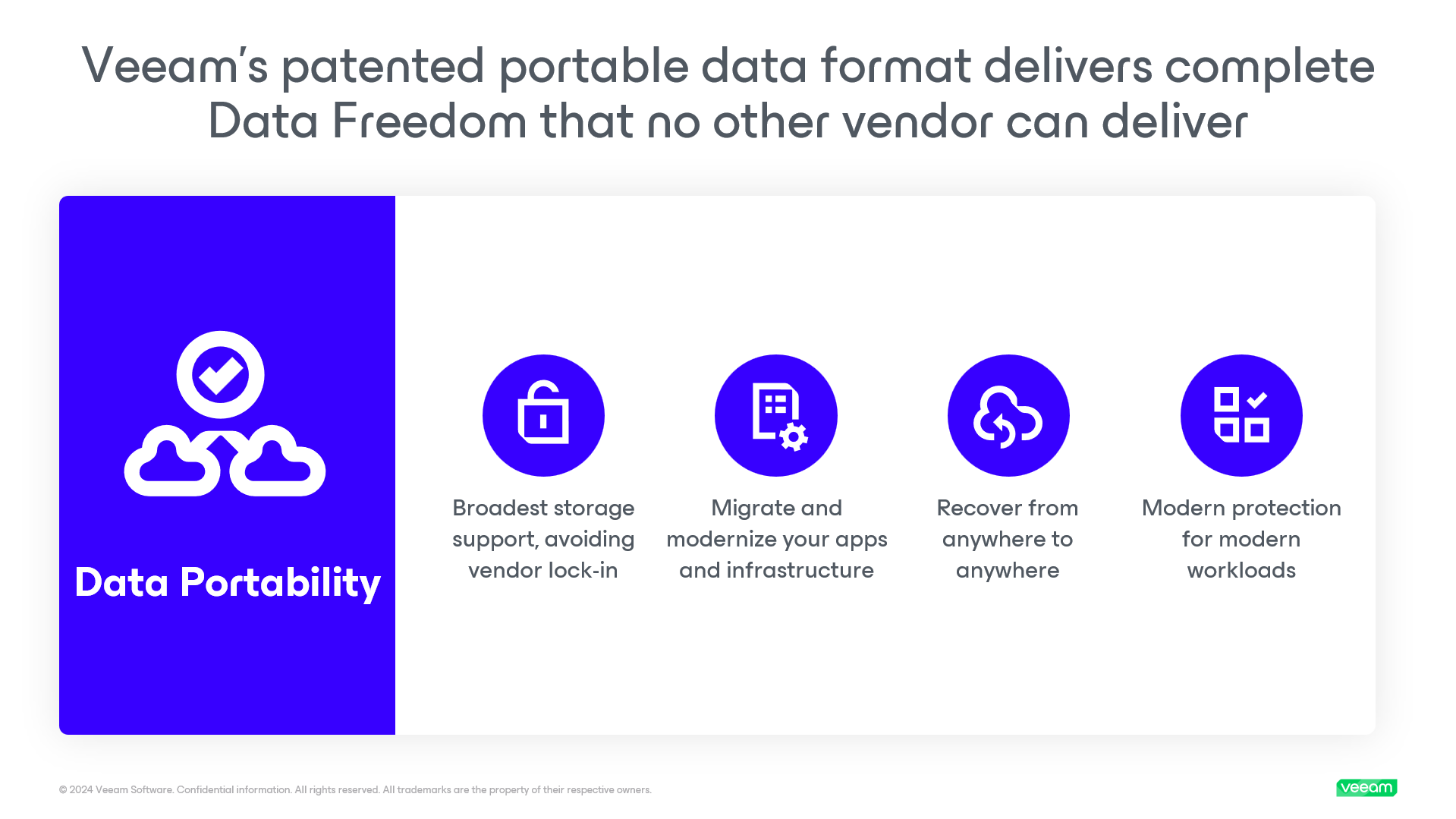VMware is a leader in virtualization, but knowing about alternative costs can help organizations optimize their IT strategies while maintaining essential capabilities.
This post takes a deep dive into the financial aspects of VMware and its competitors, offering insights that can help you make informed decisions about your virtualization investments. Whether you're assessing VMware's pricing or looking for more budget-friendly options, understanding the total cost of ownership (TCO) and potential return on investment (ROI) will be key in shaping your strategy. This is a bit of a different tone here in the Veeam Community, but I’m collecting a bunch of resources that have been shared, as well as some of the latest information from VMware.
Overview of Virtualization Costs
Virtualization technologies bring versatility and efficiency but also come with various associated costs that include:
- Licensing Fees: These are the upfront costs for acquiring the virtualization software, potentially including perpetual licenses, subscriptions, or usage-based models.
- Support Contracts: Regular expenses for maintenance, technical support, and access to updates that vary based on the chosen level of service.
- Infrastructure Investments: Capital costs for the necessary hardware such as servers, storage, and networking equipment to support the virtualized operations, encompassing both initial deployment and future upgrades.
VMware's pricing model typically involves CPU core-based licensing fees, optional comprehensive support contracts, and considerations for infrastructure scalability. Understanding these elements is crucial for gauging the long-term financial commitment involved in maintaining and scaling a VMware environment.
Detailed Cost Structures of VMware Alternatives
Exploring alternatives to VMware can unveil opportunities for cost savings while maintaining or enhancing IT capabilities. We'll examine several prominent competitors and their unique cost models that offer Veeam support:
- Microsoft Hyper-V: Often bundled with Windows Server licenses, which might offer savings for organizations already embedded in Microsoft ecosystems. However, advanced features and management tools may increase costs.
- Nutanix AHV: Comes with a subscription model that includes all features, potentially simplifying budgeting and offering cost predictability. Its tight integration with Nutanix's hyper-converged infrastructure can also reduce the total hardware needs.
- Red Hat Virtualization & Oracle Linux Virtualization Manager: Offers a subscription-based approach with various support levels, built on the open-source KVM hypervisor, which might appeal to those seeking flexibility and lower costs over proprietary solutions.
- Proxmox VE: A completely open-source solution with no initial licensing costs, relying instead on optional paid support and community contributions, suitable for budget-conscious organizations with technical acumen. (Now supported in Veeam Data Platform 12.2!)
Factors Influencing Total Cost of Ownership (TCO)
Beyond upfront costs, evaluating TCO involves considering factors that impact long-term financials:
- Staff Training: Many organizations underestimate the cost and time involved in training their staff on a new platform. Specialized training is necessary for teams to manage and secure modern virtualization environments effectively.
- Compatibility: Integration capabilities with existing infrastructure, which can mitigate potential expenses related to system incompatibilities or extensive training.
- Scalability: The ease with which the platform can handle increased workloads and users, and whether additional investments are needed for expansion.
- Operational Costs: Recurring expenses for maintenance, support, and potential upgrades, including the need for specialized staffing.
- Performance and Efficiency: Operational efficiency and resource management can lead to indirect cost savings through reduced hardware needs and lower energy consumption.
Avoiding Lock-In
Vendor Lock-in: The flexibility of migrating to different platforms and the associated costs, which could affect future IT strategy shifts. This can have implications for an IT strategy. Understanding virtualization cost structures enriches strategic IT planning, aligning technological deployments with broader organizational objectives:
- Budget Optimization: Effective cost management in virtualization choices enables resource allocation that supports other critical business functions, enhancing overall fiscal health and investment returns.
- Digital Transformation Facilitation: Virtualization is foundational to digital transformation, offering the agility necessary for adapting to rapid market changes and fostering innovation.
- Strategic Business Alignment: Ensuring that IT infrastructure not only supports but actively drives business objectives is crucial for sustained growth and competitive advantage.
Latest Updates from VMware
Last week was VMware Explore in Barcelona, and just before that I was very excited to see this interesting blog post from VMware: Bringing More Value and Options to the VMware Cloud Foundation Portfolio
What was very interesting about this was a new licensing offering: VMware vSphere Standard and VMware vSphere Enterprise Plus. I’m very much curious how this will impact in the market, yet I am cautiously optimistic at this point. Did you see the news here? What is your point of view on it? Share your comments in this post.
Considerations for Strategic IT Alignment
When evaluating VMware or alternative platforms, several strategic factors should be taken into account:
- Operating Model Alignment: Determine if a private cloud approach aligns with the enterprise’s operational framework. Not all environments are suited for self-service models, and it’s important to match the technology choice with the organization’s needs.
- Ecosystem Compatibility: Virtualization platforms impact how well they integrate with existing and future technology ecosystems. Standardizing on a single platform can simplify operations but may also require careful planning to ensure long-term compatibility.
- Transition Costs: Any transition within or outside the VMware ecosystem must factor in associated costs, including research, consulting, and potential migration expenses. Veeam supports seamless backup and recovery across platforms, which can help reduce some of these expenses.
Control and Compliance: Maintaining control over data and infrastructure is vital for meeting compliance requirements and safeguarding sensitive information. Organizations should evaluate how each platform addresses these aspects to ensure alignment with security and compliance mandates.
Veeam’s Role in Virtualized Environments

- Data Portability: With Veeam, early design choices mean less friction when moving workloads across different platforms, even in complex environments like VMware. This flexibility can support:
- Seamless Movement: Easily migrate workloads between platforms, whether it’s from VMware to cloud or across hybrid setups.
- Adaptability: Hybrid and multi-cloud strategies are supported without additional overhead, allowing businesses to evolve at their own pace.
- Cost Optimization: Veeam’s solutions are structured to ensure that meeting resilience goals doesn’t have to come at a steep price. A few areas where we help include:
- Efficient Data Protection: Storage and backup times are minimized, which translates to lower costs over time.
- Minimizing Downtime: Quick, reliable recovery options help prevent disruptions that could impact operations and bottom lines.
- Avoiding Vendor Lock-In: Veeam’s vendor-agnostic approach means freedom to choose and flexibility to change, without being tethered to a single ecosystem:
- Interoperability: Broad platform support makes it easier to integrate into your current environment without the limitations of a single vendor.
- Futureproofing: With support across various infrastructures, Veeam helps ensure you’re prepared for whatever comes next in your IT strategy.
Conclusion
Investigating VMware cost alternatives offers valuable perspectives for any organization looking to optimize its virtualization strategy. By thoroughly understanding the different cost structures and strategic implications, IT leaders can make informed decisions that not only optimize technological performance but also align with fiscal goals, driving efficiency and innovation across the board.
Call to Action
You are in the right place. The Veeam Community has opinions, advice and more on how to approach the current conditions. See these resources below to see how Veeam can help you in your hypervisor platform decision process. Additional Resources





